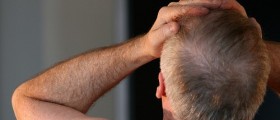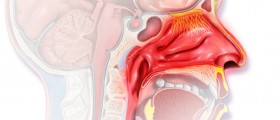
Headache and mostcommon causers
When it comes to thecondition in question, quite a number of underlying ailments can be at itsfoundation. Among the most common culprits are considered to be such illnessesas cold, sinusitis, migraines and any kind of injury that affects the head ina negative manner. Another important fact to bear in mind is that each kind ofa headache bears different and specific manifestations that accompany it, andthus requires different treatment approach all together.
Given the fact thateach headache differs, so does the accompanying pain. A person can suffer frompain, either mild or severe in nature, as well as from a feeling of discomfortin the area of the head affected by the headache present, and also in the regionabove the ears and eyes. Other areas that may be affected by the pain are the rearside of the person’s head, and the upper part of one’s neck. It is alsopossible for a headache to be directly followed by nausea, vomiting, confusion,irritability, and hearing related discomfort.
Headache types
The generalclassification of headaches goes as follows: primary headaches, secondaryheadaches and facial neuralgias. When it comes to the first type of headaches,the most frequent are considered to be the tension headaches, cluster headachesand migraines. Most frequent secondary headaches are, in the majority of cases,directly related to the specific illnesses and conditions such as common cold,meningitis, stroke, brain tumor, as well as a specific head injury or injury tothe person’s brain. As for the third headache category, the most representativeis considered to be the trigeminal neuralgia.
Most frequentlyoccurring symptoms
Just as with the pain,the symptoms themselves, together with their intensity, are of variable natureand dependant on the underlying cause itself.
Tensionheadaches present most frequently occurring varieties of headaches and areprimarily caused by stress, a specific emotional state and due to the exposure tohigh-volume noise. Furthermore, the headache in question is exhibited in twodifferent types – chronic headache and episodic headache. As for the pain, itusually occurs first in the back region of the head, as well as in the upperneck region, and it is of mild nature but constant and it affects both sides of theperson’s head. The feeling it causes is that of tightness and intense pressureClusterheadaches represent a significantly intensive variety. When it comes to thespecific cause, unfortunately it still belongs to the realm of the unknown,though the occurrence of any hypothalamusrelated abnormality is marked as a contributing factor quite often. In addition, a change in the regular levels of cortisol,melatonin and neurotransmitters is held responsible for the occurrence ofthis headache. Pain itself is rather intense, sharp and penetratingMigraineheadache initiates the occurrence of strong pain, affecting one or both sidesof the person’s head. This pain is described as extremely difficult to bear andthrobbing. Additional manifestations include excessive fatigue, nausea,vomiting, dizziness, lack of appetite, blurred vision and hypersensitivity,especially to sound, movements and intense lightSinusheadaches are rooted in sinusitis, of course. The occurrence of inflammationin the passages of the nose, eyes and cheeks are all probable causes. Pain is regardedas strong and deep, affecting primarily the person’s forehead area. But isknown to spread easily to the person’s cheekbones and nose bridge as well.
















Your thoughts on this
Loading...